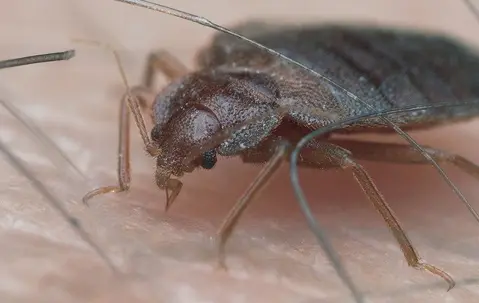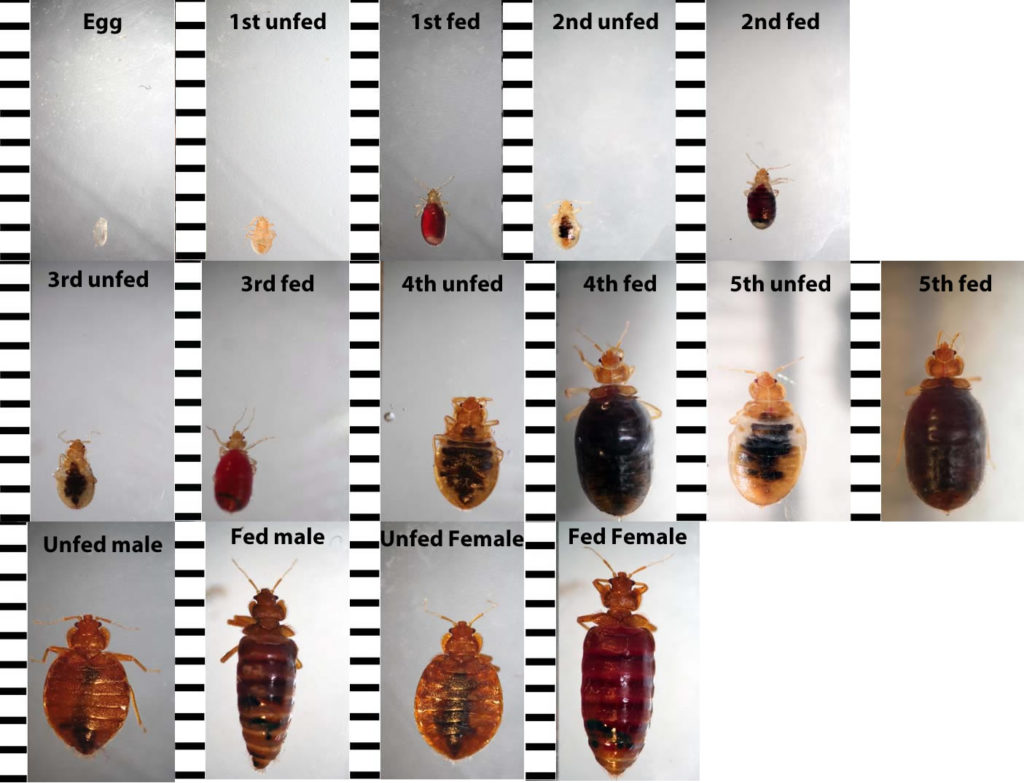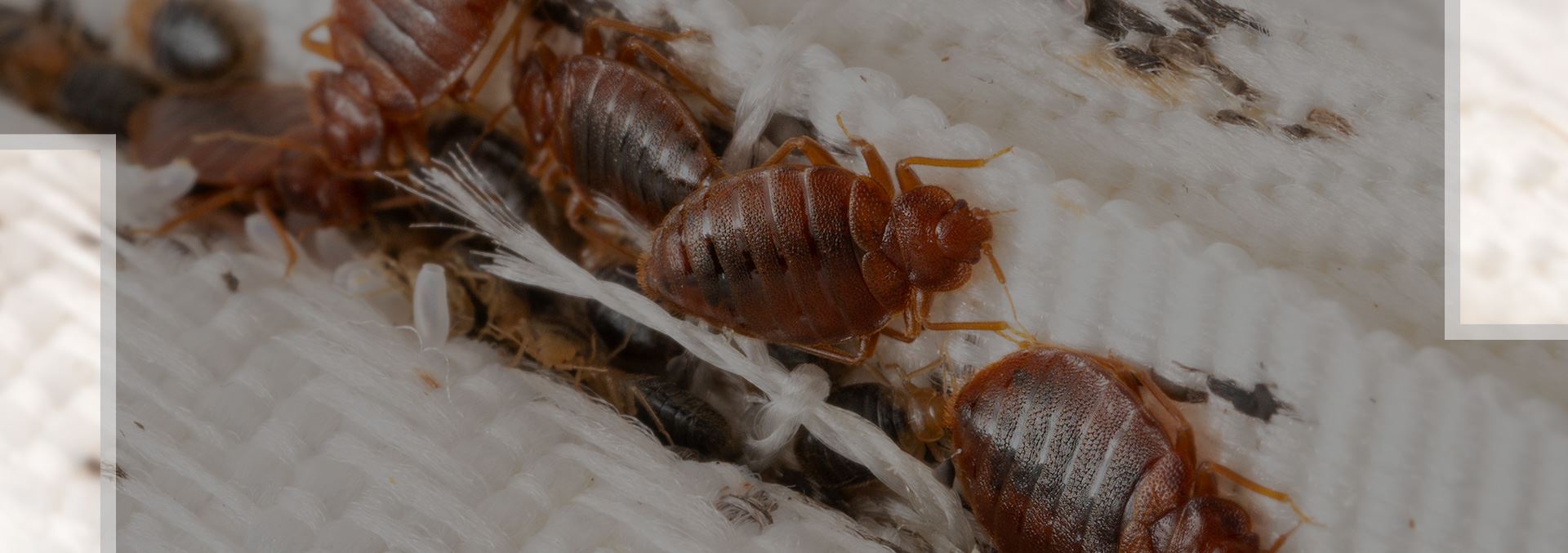Florida’s subtropical warmth, renowned beaches, and vibrant culture draw residents and visitors alike. Unfortunately, these appealing conditions also sustain certain pests, among them bed bugs—tiny, elusive insects that feed on human blood at night and hide in mattress seams or furniture cracks by day. In popular areas like Coral Gables, bed bugs can thrive if no occupant catches their early presence. This service page explains how bed bugs flourish in Florida’s environment, the signals alerting you to a possible infestation, and why enlisting a professional bed bug exterminator for bed bug treatments is the surest way to remove these biting insects. By intervening promptly when you suspect bed bugs, you keep their population from mushrooming and reduce the stress and sleepless nights associated with their bites.
Why Bed Bugs Prosper in Florida

- Mild Winters and Consistent Warmth
In regions with frigid winters, bed bugs face dormancy or slowed breeding for months. Florida’s winter rarely remains cold enough to hinder these pests, especially since heated or air-conditioned buildings keep indoor temperatures stable. Consequently, bed bugs breed year-round with few climate-based restraints, allowing even a minor infiltration to become a robust colony if left unchecked. - Frequent Travel and Population Movement
Coral Gables, known for upscale neighborhoods and proximity to Miami, sees substantial occupant turnover—snowbirds returning for warmer seasons, tourists renting short-term, or locals frequently acquiring secondhand furniture. Each scenario can inadvertently bring in bed bugs via suitcases, clothing folds, or pre-owned items. A single unnoticed bug can establish a new infestation in a matter of weeks if no occupant notices early warning signs. - Minimal Seasonal Dormancy
Bed bugs in colder locales slow down or enter partial dormancy during long freezing spells. Florida’s mild weather imposes no such forced halt, so bed bugs can remain in near-constant feeding and reproduction cycles. Over weeks, a few survivors can place eggs repeatedly, quickly expanding hidden nests behind headboards or within sofa seams. - Stable Indoor Environment
Inside modern homes, condos, or commercial buildings, moderate temperatures (65–85°F) foster bed bug activity year-round. With consistent occupant routines and daily presence of hosts—like residents or guests—bed bugs secure a steady supply of blood meals, fueling nymph development and repeated egg-laying. - Short-Term Rentals and Shared Housing
Properties in Coral Gables used for short-term rentals or multi-unit living might not consistently detect the first signs of bed bugs if occupant turnover is high or if housekeeping staff misses small black droppings on sheets. Quick occupant transitions let bed bugs remain, feeding on new guests or owners without obvious detection until their numbers climb.
Recognizing a Bed Bug Infestation
- Itchy Bites or Red Welts
Bed bugs bite exposed skin—like arms, legs, neck—while people sleep, leaving small, itchy bumps. Some individuals show strong reactions, with inflamed welts forming in lines or clusters, whereas others may not react noticeably. If occupant bites persist with no visible fleas or mosquitoes, bed bugs become a likely culprit. - Blood Stains or Dark Specks on Bedding
After feeding, a bed bug might be crushed inadvertently, leaving faint rust-colored smears on sheets or pillows. Tiny blackish spots—droppings—may accumulate along mattress seams or near bed corners. Inspecting these areas closely often confirms that bed bugs feed regularly. - Eggshells and Shedded Skins
As nymphs mature, they molt, discarding translucent exoskeletons. Their whitish eggs, around 1 millimeter, stick to seams or furniture cracks. Shining a flashlight into tight corners, baseboard edges, or couch seams can reveal these discarded shells and eggs. - Musty or Sweet Odor (in Heavy Infestations)
Large bed bug colonies produce subtle pheromones that create a sweet or musty aroma in affected rooms. Not every infestation reaches that odor threshold, so rely mainly on physical evidence—bites, stains, live bugs—for confirmation. - Live Bed Bugs in Seams or Cracks
Adult bed bugs measure around 5–7 millimeters, with a flattened, oval body that turns red-brown after feeding. They prefer hidden spots—like behind headboards, within mattress piping, or under carpets. Disturbing these items sometimes sends bed bugs scurrying for darker refuges.
Consequences of Postponing Bed Bug Treatment
- Rapid Population Growth
A single female can produce numerous eggs over her lifespan. Under Florida’s stable indoor warmth, eggs hatch quickly, fueling multiple generations in just weeks. A minor incursion left undetected can blanket multiple rooms or units, requiring more invasive methods if occupant action is delayed. - Escalating Bites and Anxiety
Repeated bed bug bites erode occupant sleep quality and peace of mind. People often dread bedtime, laundering sheets nightly or avoiding entire bedrooms. Psychological stress can build, prompting occupant frustration with the ongoing cycle of bites. - Potential Spread to Neighbors
In multi-family condos, apartments, or connected properties, bed bugs may travel along shared wiring or cracks if occupant efforts remain partial. Coordinating building-wide inspections or treatments prevents them from migrating and returning after one unit is cleared. - Damage to Reputation
For rental hosts, hotels, or short-term lodging in Coral Gables, bed bug reports can tarnish occupant trust or invite negative online reviews. Swift detection and discreet extermination preserve brand value and occupant satisfaction.

Why a Professional Bed Bug Exterminator Helps
- Comprehensive Inspection
A skilled bed bug exterminator inspects mattresses, box springs, upholstered furniture, baseboards, and other potential hideouts. Identifying every infested zone ensures the entire colony is exposed, not just the visible adult bugs near bedding. - Eradicating All Life Stages
Bed bugs exist as eggs, nymphs, and adults. Removing only adults fails if eggs remain. Professionals deploy methods (like steam, heat, or insect growth regulators) that kill bed bugs at every stage, blocking re-infestation cycles. Without thorough coverage, eggs can hatch later, rekindling the problem. - Careful, Targeted Use of Chemicals
Over-the-counter sprays risk scattering bed bugs deeper behind walls or saturating occupant environments. Exterminators strategically apply insecticides or insect growth regulators in crevices bed bugs frequent, minimizing occupant or pet exposure while ensuring bed bugs cross lethal surfaces. - Follow-Up and Prevention
Because bed bug eggs may hatch over weeks, scheduling re-checks or occupant-based monitoring ensures newly emerged nymphs also meet lethal contact. Exterminators may suggest mattress encasements, bed leg interceptors, or occupant routines like vacuuming carpets to maintain success.
Methods for Bed Bug Treatments
- Inspection and Mapping
The professional investigates bed frames, sofas, carpeting, and behind wall décor to confirm bed bug presence. Recording droppings, adult sightings, or shells pinpoints whether bed bugs concentrate in specific rooms or if multiple areas require attention. - Vacuuming and Steam
A pre-chemical step might include vacuuming surfaces to collect adults, nymphs, or eggs, reducing the immediate population. High-temperature steam—reaching over 180°F—kills bed bugs on contact in mattresses, upholstery, or cracks where deeper chemical penetration is challenging. - Insect Growth Regulators and Residual Insecticides
Applying insecticides around baseboards, mattress seams, or furniture frames leaves a toxic barrier that bed bugs crossing will encounter. Insect growth regulators hamper egg development or nymph maturity, eliminating future breeding cycles. Occupants typically wait for dryness before re-entering treated areas. - Heat Treatments
For severe or multi-room infestations, raising the indoor temperature above ~120°F can destroy bed bugs behind walls, inside electronics, or within furniture simultaneously. Occupants vacate for the duration, returning once temperatures drop to normal, typically the same day. - Mattress Encasements and Monitors
After initial extermination steps, sealing mattresses or box springs in bed bug–proof covers traps any remaining insects inside, starving them eventually. Monitors or interceptors under bed legs help reveal new bed bug activity, letting occupants or professionals address any survivors quickly.
Why Act Swiftly at First Signs
- Prevent Spread and Growth
Small pockets of bed bugs multiply fast in Florida’s mild conditions. Prompt occupant action or immediate professional help keeps them from migrating through walls, infesting new rooms, or crossing into neighbor properties. - Mitigate Anxiety and Sleep Disruption
Continuous bites ruin rest, fueling occupant frustration and daily fatigue. Early, thorough removal returns a sense of normalcy and fosters occupant well-being. - Preserve Property Reputation
Whether for personal residences or short-term rentals, bed bug complaints hamper occupant confidence. Quick detection plus discreet, comprehensive treatments restore occupant trust and the property’s positive standing.
Avoid More Drastic Solutions
As bed bugs spread widely, advanced measures like multi-room heat treatments or partial renovations might become necessary. Early occupant vigilance, combined with simpler treatments, saves cost and occupant inconvenience.

Maintaining a Bed Bug-Free Environment
- Inspect Second Hand Items
Thoroughly check used furniture or mattresses for dark droppings, eggs, or live bed bugs. Vacuum or treat these pieces before bringing them indoors, preventing stealthy introductions. - Frequent Bed Linen Checks
Weekly stripping of sheets or flipping mattresses reveals droppings or black specks. Prompt occupant attention to suspicious stains or leftover exoskeletons catches bed bugs early. - Vacuum and Launder Regularly
Using hot wash and dryer cycles on bedding or clothing kills hidden eggs or nymphs. Vacuuming carpets, rugs, or furniture corners often disrupts potential bed bug hideouts, especially near areas where people rest. - Minimize Clutter
Reducing clutter around sleeping quarters denies bed bugs multiple hiding places. Clear floors or corners, store extra items in sealed bins, and keep bed frames away from walls so bed bugs cannot easily climb from cracks onto mattresses. - Routine Occupant Awareness
Watching for new bites or black stains, listening for occupant complaints in multi-unit settings, and scheduling annual or semi-annual pest checks hamper any bed bug resurgence. If occupant suspicion arises, contacting professionals promptly forestalls second-wave outbreaks.
Next Steps
Noticing unexplained itchy welts in the morning, finding rust-colored dots on sheets, or spotting bed bugs scurrying when you flip on a light? Contact us to learn more or schedule your service. Our bed bug exterminator solutions in Coral Gables tackle every stage of infestation—from newly laid eggs to biting adults. Swift detection and thorough treatments halt bed bugs in their tracks, restoring occupant comfort and hygiene. By blending occupant vigilance with advanced extermination methods—like steam, heat, or insect growth regulators—you conquer these pests, preserving calm nights and preventing repeated bed bug cycles.
